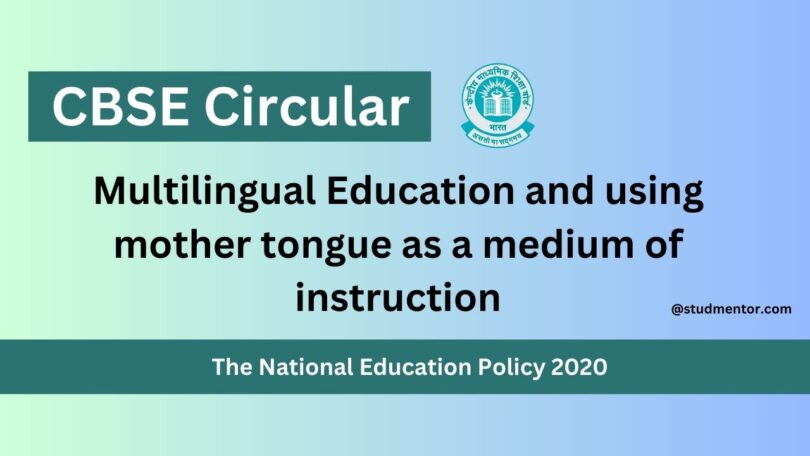Are you searching for – CBSE Circular – Multilingual Education and using mother tongue as a medium of instruction
Then you are at Right Place.
The Complete and Official Information of CBSE Circular – Multilingual Education and using mother tongue as a medium of instruction
CBSE Circular – Multilingual Education and using mother tongue as a medium of instruction
Multilingual education has been widely recognized as a valuable approach to fostering linguistic diversity,
cultural understanding, and academic success among students. The National Education Policy 2020, in
paragraph 4.12, emphasizes the significant cognitive advantages of multilingualism for young learners,
particularly when they are exposed to multiple languages from foundational stage, with a specific focus
on their mother tongue. The policy strongly advocates for utilizing the home language, mother tongue,
local language, or regional language as the medium of instruction whenever feasible, at least until Grade
5, but preferably extending till Grade 8 and beyond
The implementation of multilingual education and the utilization of the mother tongue as a medium of
instruction present several challenges including the availability of skilled teachers capable of teaching in
multilingual settings, the creation of high-quality multilingual textbooks, and the limited time available,
especially in two-shift government schools, as multilingual education demands additional instructional
time allocation.
In view of above challenges, the Ministry of Education, Government of India has taken several measures
to actualize education through Indian languages medium on ground. One of the major steps taken now
is the direction by the Ministry of Education to NCERT for preparing new textbooks through 22 scheduled
Indian languages. The NCERT has taken this serious task on highest priority so that textbooks in 22
scheduled languages can be made available to all students from next sessions.
Higher Education has also started gearing up to produce textbooks through Indian languages, and initiate
learning-teaching process through Indian language mediums in addition to English medium, and to
conduct examination through Indian languages as well. The textbooks in technical education, medical
education, vocational education, skill education, law education, etc. are now coming through Indian
languages.
Since higher education has started responding to this need then school education has to become its
foundation. The approach towards medium of instruction should be a continuity from school education to
higher education. Therefore, the schools affiliated to CBSE need to play a vital role in this great
endeavour by offering education through Indian languages.
In view of the above initiatives taken to facilitate education through Indian languages, the CBSE
affiliated schools may consider using Indian languages, as enumerated in the Schedule 8 of the
Indian Constitution, as the medium of Instruction from Foundational Stage till end of Secondary
Stage i.e. from pre-primary classes till class XII as an optional medium in addition to other existing
options. Schools may explore the available resources, consult with experts in the field, and
collaborate with other schools to share best practices to make multilingual education in CBSE
schools a reality.

